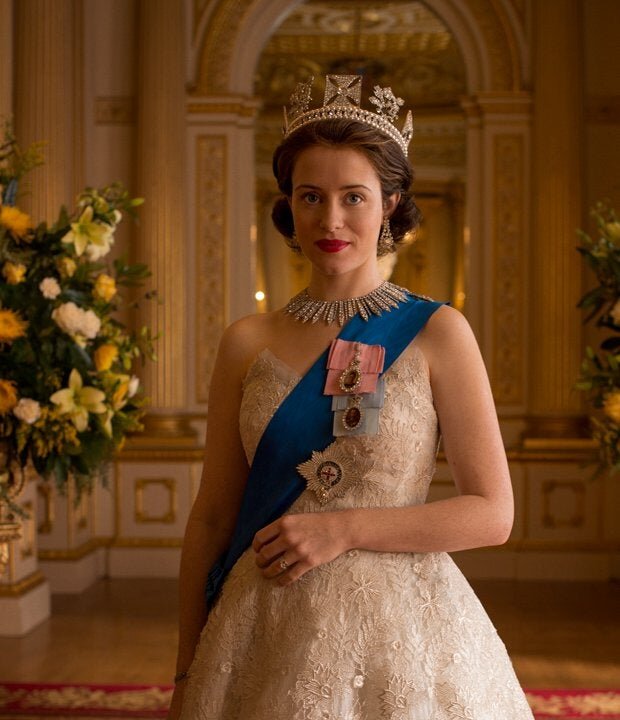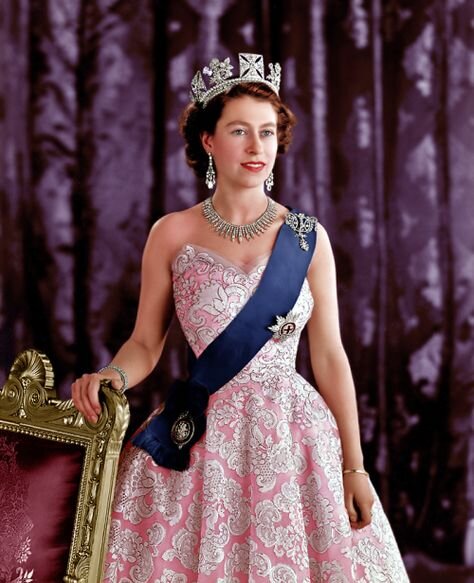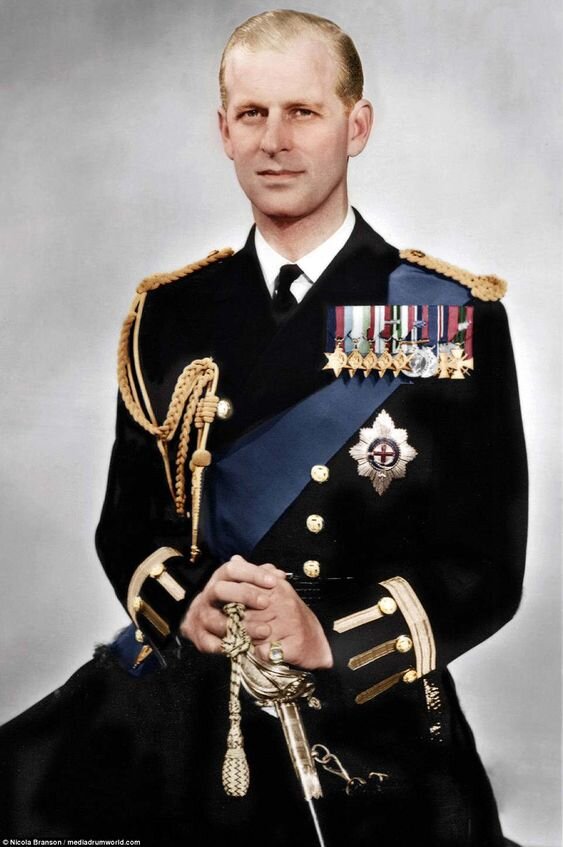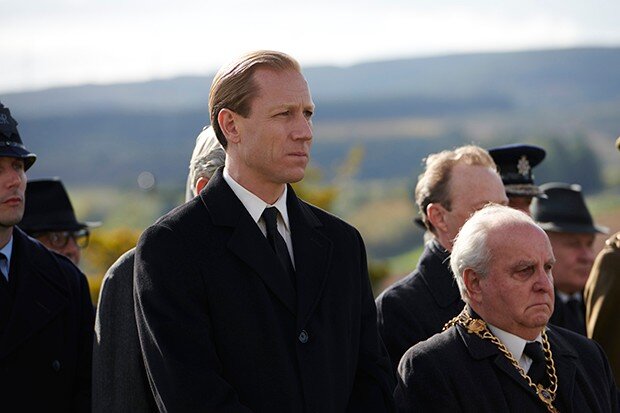Over-Analyzing The Crown: S3E5 Coup
All My Posts on The Crown
S3: 1 & 2: “Olding” & “Margaretology” 3: “Aberfan” 4: “Bubbikins, 5: “Coup” 6: “Tywysog Cymru” 7: “Moondust" 8: “Dangling Man” 9: “Imbroglio” 10: “Cri de Coeur”
S4: 1: “Gold Stick” 2: “The Balmoral Test” 3: “Fairytale” ( + Cinderella References) 4: “Favourites” 5: “Fagan” 6: “Terra Nullius” 7: ”The Hereditary Principle” 8: “48:1” 9: “Avalanche”
The Medals, Sashes, and Tiaras of The Crown; Tiaras/Crowns Overviews: Season 1 ; Season 2
Prime Minister Harold Wilson is unpopular due to all the economic troubles in England, so, pushed by his Cabinet, he fires Lord Mountbatten in an effort to improve things, who then joins an attempt to launch a coup of the government. Queen Elizabeth takes a break from it all to go hang out with horses in France and Kentucky (good for her!).
So that front page of the newspaper shown in the show totally happened, y’all. Here’s the actual one.
There’s a really intense music at the beginning of this episode (that vaguely reminds me of the “previously on Battlestar Galactica” music? If you’ve watched it, you’ll know what i mean) as we follow Cecil King from the street into the newsroom, where he crosses out the headline and makes it harsher. This is the second episode in a row where the episode starts by following a minor character’s walk from a vehicle into a building to spew harsh truths; in “Bubbikins,” the episode started off with Princess Alice’s accountant getting out of a motorcycle sidecar and walking into the convent to talk to her. I think they’re both even wearing tan jackets. How odd.
It’s ironic that Cecil King’s own harsh coverage of Labour government is what pushes the Cabinet to urge Wilson to fire Lord Mountbatten from his job as Chief of the Defence Staff. Cecil LOVES Lord Mountbatten and thinks his firing is the worst. They emphasize both in the newsroom and in the cabinet that the Mirror is a Labour-supporting newspaper, and yet they’re STILL criticizing the government really harshly. And then King starts to launch a coup (because his name was just foreshadowing I guess???).Can I just say that I love that this show kept everyone’s names, no matter how many of them there were? In this episode, we have a Cecil King and a Cecil who serves as Elizabeth’s racing manager (his surname wasn’t given in the episode but IMDB says it’s Boyd-Rochfort). In the second season, we saw Cecile Beaton the royal photographer (he was in the first season too, i think, but I don’t know if we ever got his name).
It may seem like a small thing for which to applaud them, but OTHER English “period” dramas haven’t done that. The Tudors notoriously erased one of Henry VIII’s sisters, changed the other one’s name from Mary to Margaret to avoid confusion with Henry’s daughter Mary, and then married her off to the king of Portugal (it was FRANCE, y’all. /sigh/).I marathoned season 1 and 2 of the Crown recently, so I enjoy seeing the ways in which the cabinet meetings change over time. This Labour cabinet seems a little more combative then the previous Prime Ministers’, plus I think this is the first one we’ve seen women sit in? Even if there were women in the previous seasons’ cabinets, they definitely weren’t as outspoken or comfortable in the room as the ones we see in Harold Wilson’s cabinet. They’re both pretty fabulous. We’ve got Wilson’s private secretary, Marcia Williams/Falkender (played by Sinead Matthew), who previously yelled “Grow some balls!” at Wilson in the Aberfan episode. We also have Barbara Castle ( played by Lorraine Ashbourne), who served many different roles under Wilson, including as the first-ever Minister for Overseas Development, Minister of Transport, Secretary of State for Employment and Secretary of State for Social Services.
In this scene, Wilson is back to his pipe in front of a single green lantern that’s lit in the dark, while all the others are off. The women in the meeting wear green. This seems to point to the money focus of the current meeting and crisis. Conveniently, as they talk about how pompous and proud Lord Mountbatten is, we see a scene of him wearing the grandest military uniform ever, in front of a huge number of soldiers. Wilson fights against the suggestion of firing him very briefly, but not too hard, not like when he fought against blaming the queen for Aberfan.
Harold Wilson with Marcia Williams/Falkender (Credit: PA)
Marcia Williams/Falkender (played by Sinead Matthew) in The Crown
Wilson kicks him out while sitting in the cabinet room at the gigantic table; they both look very tiny in that large space at that large table. I’ve noticed that Mountbatten basically wears the colors of the Union Jack in every shot in this episode—a blue tie when Wilson fires him and a red, white, and blue tie when his office is being cleaned out.
Mountbatten sits in his office forlornly as people clean out his office around him and receives a very sad cake with the haphazardly written “Farewell” on it. A bunch of soldiers serenade him with “Auld Lang Syne” as he leaves. HIS PAINTING is literally is being carried out right behind him; that’s a beautiful and dramatic shot, as all the singing military men look down to watch him pass. I’m not positive, but I think the painting is actually of Lord Mountbatten in real life rather than Charles Dance?
Sidenote: The Aberfan villagers have these soldiers beat when it comes to three-part harmony.That dog is looking up at Mountbatten’s son very intently while waiting for Mountbatten to drive home. Mountbatten also has statues of all his dogs? Huh. The guy really likes his dogs I guess. Also, if I ever get fired in the future, I definitely want to recover from it by dramatically bathing in a gorgeous tub while petting a dog and drinking liquor from a crystal decanter.
Lord Mountbatten
Lord Mountbatten with his dog Kimberley (Credit: David Montgomery / Getty)
Lord Mountbatten in The Crown Season 1 ?, portrayed by Greg Wise
We next see the Queen on the train, wearing a business-like white floral dress and hat and signing various acts. When Michael Deane says “Pens down, your majesty, ten minutes to Newmarket,” she instantly smiles and looks so much lighter and brighter. She then changes into the clothes she’d wear all the time if she could, more sensible clothing, in blues and a plaid skirt. There’s a very lovely small moment where she picks a hair off the clothes of the woman dressing her, indicating their close, friendly relationship, even if we haven’t actually met this woman in the story itself.
At the ascot races, with Porchie, the Queen is in a ridiculously pink and grey floral dress with a very loud matching hat, while her mom is in a similar purple and white floral. Porchie and Dickie are both in the traditional ascot race men’s uniform, top hats and tails. Mountbatten calls her father’s horse training methods obsolete, quite obviously talking about himself and how he was fired. The Queen notably looks over at Queen mother as Porchie mentions she can deputize people to serve in her absence.
Lord Mountbatten (Credit: Allan Warren)
Charles Dance as Lord Mountbatten in The Crown
Charles Dance as Lord Mountbatten in The Crown
When the Queen meets with Wilson, she is noticeably distracted by a large painting of her horse (this seems to tie back to the previous episode, in which a shot at the end showed that her office was positively full of horse paintings). When Wilson says he has to devalue the pound and feels totally humiliated by it all, the queen barely reacts and is just like, eh, that sucks, I’m off to France to hang with horses now.
Cecil King is in a black pin striped jacket, red tie, and has a gold clock on a chain. His outfit is the first indication we’ve really seen that he’s actually a rich banker. He quotes Hamlet, saying “there is special Providence in a fall. If it be now, ’tis not to come. If it be not to come, it will be now. If it be not now, yet it will come—the readiness is all.”
Cecil’s mention of Mountbatten’s war hero credentials brings something to mind; it wasn’t mentioned very much in the first two seasons, but it’s a good reminder that pretty much all the adults older than 30 at this point in the show lived through World War II, and a good portion of them are also war heroes.
As Wilson explains devaluing on tv, all the cabinet wears red, red ties and red dresses, continuing the apparent “Union Jack” costuming with all the people involved in the government and coup plot. Perhaps this indicate that all of them really are trying to act in the country’s best interest?
This continues at the Bank of England coup meeting with Mountbatten in a blue tie and Cecil King in a red tie.
Then we watch a dramatic montage of Mountbatten researching coups, history and law, while wearing red white and blue tie. I gotta say, if you’re going to launch a coup, researching what’s worked in the past and what hasn’t is pretty smart. The shot of the cars approaching mountbatten’s house all at once is almost military invasion-like.
As talks about ways to do a coup, we see b-roll of the Queen looking very happy while doing horse things and wearing various tans and light green outfits and scarfs (pink, light blue, brown). Basically, throughout her horse holiday, she’s wearing very non-Union Jack colors because she’s on holiday and trying not to think about being Queen right now, thank you very much. She and Porchie also seem to match at times, indicating their friendship. Porchie does look at her a little too long at one point, bringing back the Season 1 plotline about how he’s secretly in love with her.
“Porchie” and the Queen (Credit: Roger Jackson / Getty)
The Queen (Claire Foy) and “Porchie” (Joseph Kloska) in The Crown
“Porchie” (John Hollingworth) and the Queen (Olivia Colman) in The Crown
The conversation in which the Queen says that “this,” namely, being involved with horses, was what she was really meant to do full time, not being Queen. There’s so much sadness and regret in her voice as she talks about how she only is in this position because her uncle didn’t do his own job.
Wilson is again wearing a red tie when he calls the Queen and tells her about the coup and Mountbatten’s involvement in it. As she walks back up the stairs afterwards, she looks terribly defeated, but tightens her lips and gets down to the business of being Queen again, the job she never wanted and the job she can never leave.
When the Queen meets with Mountbatten, she’s wearing a somber brown skirt suit and starts out the conversation facing away from him at her desk, quite clearly curious. Mountbatten, in a blue and red tie, quickly realizes that she knows exactly what he’s been plotting.
I love her fierce response to his “how can you protect Wilson?” “I am protecting the prime minister. I am protecting the constitution. I am protecting democracy.” She may not like being Queen, but she clearly has grown into her role and is very good at it. She knows what she’s doing now and understands that her role as head of the family is to stop this madness immediately, before Mountbatten’s actions result in the entire royal family being …de-royaled? What would the term be here, I wonder?
She also is very specifically posed at center of the screen looking straight out at Mountbatten, full of righteous anger. He took her away from the things she loved and brought her back to reality in the most unthinkable way possible. She icily reminds him that there are other things he could be doing right now, such as looking in on his sister.
Mountbatten then does have a really lovely and sweet scene with his sister, who apparently now is bedridden. They laugh over how little children now lecture them.
This is such an interesting episode. During Seasons 1 and 2, Lord Mountbatten or “Uncle Dickie” as we’ve heard him called, was always presented as an essentially likeable and good character. Not perfect (he exchanged some nasty barbs with his wife, if I recall), but good. He comforted the young Philip at his sister’s funeral and served as a father figure for him, he gently communicated some concerns from the Conservative party about Winston Churchill to Elizabeth in a way that didn’t seem pushy, he was a confidant to Prince Charles and advocated for the boy when he was being bullied. Yet, the first time we see him in Season 3, he’s introduced in a commander role we’ve never seen him in and described as a pompous man. He’s played by an actor notorious for playing villainous roles. And he tries to stage a coup, which obviously, is terrible. It’s such a huge change . But then strangely enough, the rest of the season, he’s portrayed as pretty much a genuinely well-intentioned guy who’s trying to do good for his family and a hero in almost every storyline (except possibly the Camilla storyline in S3E9, which we’ll discuss later).
At the end of the episode, we see Prince Philip for the first time all episode, when he delightedly realizes that his wife is finally home. They talk a little about Porchie being made the new racing manager, but all the old rancor is gone now; they seem happily comfortable with each other and their relationship at this point. He then gives her a very passionate kiss, at which she promises “I’ll be up in a minute.” He has just the cutest, happiest smile on his face as he walks away.
Cecil King (Credit: BBC)
Rupert Vansittartas as Cecil King in The Crown
So. How much of the coup plot in this episode really happened? Here’s what we know. Cecil King was Chairman of the huge International Publishing Corporation, which owned the Daily Mirror, and a director at the Bank of England. According to a memoir by Hugh Cudlipp, a newspaper editor and publisher [who worked with king?], King was convinced that Britain was headed for ruin and Wilson and the rest of the Labour government in charge needed to be kicked out before they pushed the country over the edge.
King and his allies did try to get Lord Mountbatten on board with their plans, and even approached him at the Burma Star Association annual reunion (although it wasn’t King who talked to Mountbatten). King, Cudlipp, and Mountbatten did meet in 1968 to discuss King’s plans (Mountbatten brought a friend of his along). At the end, King did actually ask Mountbatten to be a titular head of government in the event of their coup. However, both Mountbatten and his friend left, saying the plan was rank treachery and they could not possibly be involved in it. A few days later, King decided to go ahead even without Mountbatten on board and published a Daily Mirror front page calling for Wilson to be brought down. He was dismissed as chairman of his publishing group three weeks later.The Queen and Porchie did go on a fact-finding tour of various stables in 1969. However, it was a much shorter trip just to France. Porchie was appointed her racing manager and stayed in that position until his death.
Lord Mountbatten recites a poem at his Burma veterans meeting to great effect. It’s the last verse of a poem by Rudyard Kipling called “Mandalay,” which is all about how a veteran is looking back on his time in Mandalay, in Burma, and wishing he was back there. It was very popular at the time and a version of it was even set to music and sung by Frank Sinatra. It’s less popular these days, as it’s got an outdated imperialist point of view. But it works perfectly for a meeting of people who were in the Burma campaign in World War II. It apparently is sometimes still read at World War II veterans events in the United Kingdom. You can find the full poem here.
Ship me somewheres east of Suez, where the best is like the worst,
Where there aren't no Ten Commandments an' a man can raise a thirst;
For the temple-bells are callin', an' it's there that I would be --
By the old Moulmein Pagoda, looking lazy at the sea;
On the road to Mandalay,
Where the old Flotilla lay,
With our sick beneath the awnings when we went to Mandalay!
On the road to Mandalay,
Where the flyin'-fishes play,
An' the dawn comes up like thunder outer China 'crost the Bay!








































































